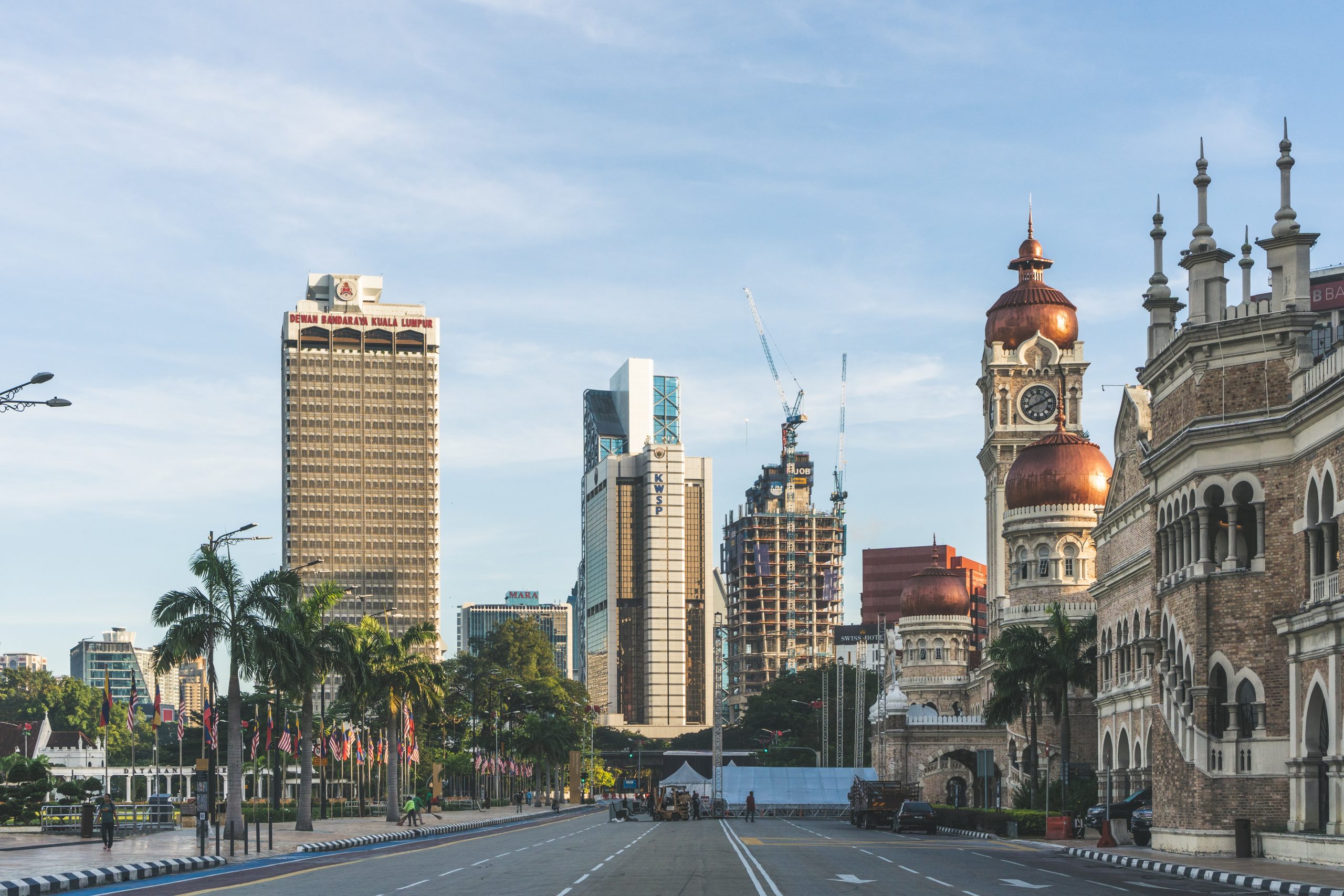
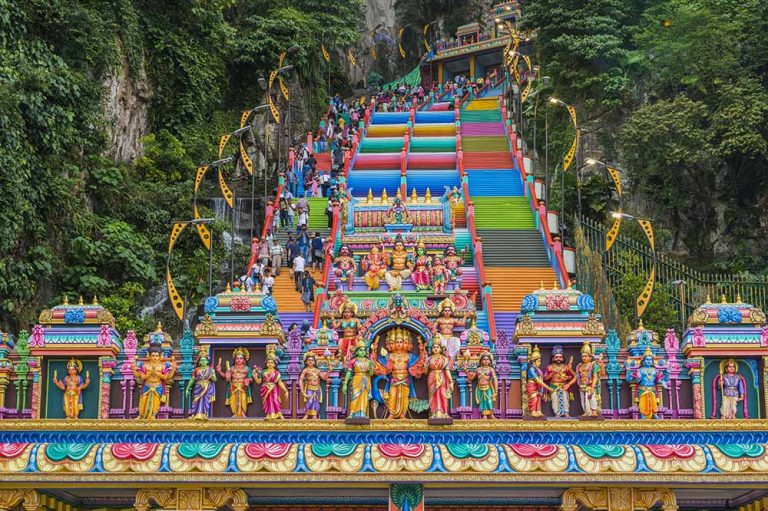
One of Malaysia’s most prolific religious landmarks just got a new look, and it’s a truly colourful head-turner!
Located on the fringe of Kuala Lumpur city, the Batu Caves Temple complex is set amidst a towering limestone formation said to be approximately 400 million years old. Officially known as Sri Subramaniar Temple Batu Caves, its history goes back to the late 19th century, when the first shrine was built inside the main cave. The temple is dedicated to the Hindu deity Lord Murugan, also known as Kartikeyya or the God of War, because the shape of the cave opening resembles a vel, a divine javelin that the deity always carries. Over the years, the temple complex has grown and in 1920, a 272-step concrete staircase was constructed to provide easier access for worshippers and visitors.
Every 12 years, it is customary for Hindu temples to undergo kumbhabhishekam, which is a cleansing and revamping ritual to synergise and revive the energy of the place and the presiding deities. The next kumbhabhishekamfor the Batu Caves Temple is on 31 August 2018, which coincides with Malaysia’s 61st National Day.
Let’s check out Batu Caves’ new look below:
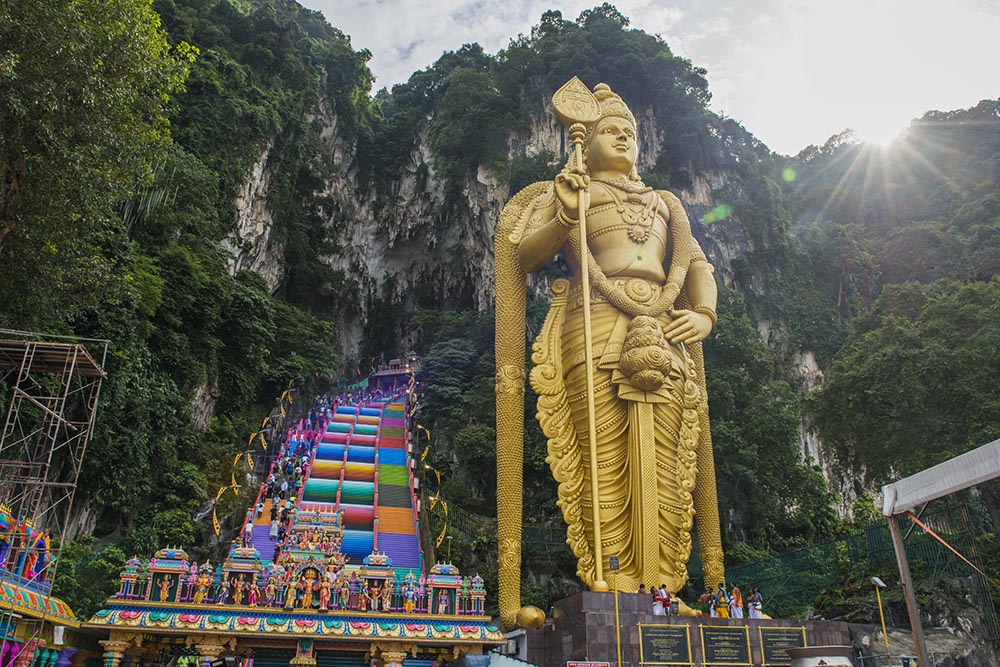
Greeting visitors at the foot of the hill is a 42.7 metre-tall statue of Lord Murugan, also known as Kartikeya or the ‘God of War’. Covered in 300 litres of gold paint, it is the largest statue in the world that is dedicated to the Hindu deity.
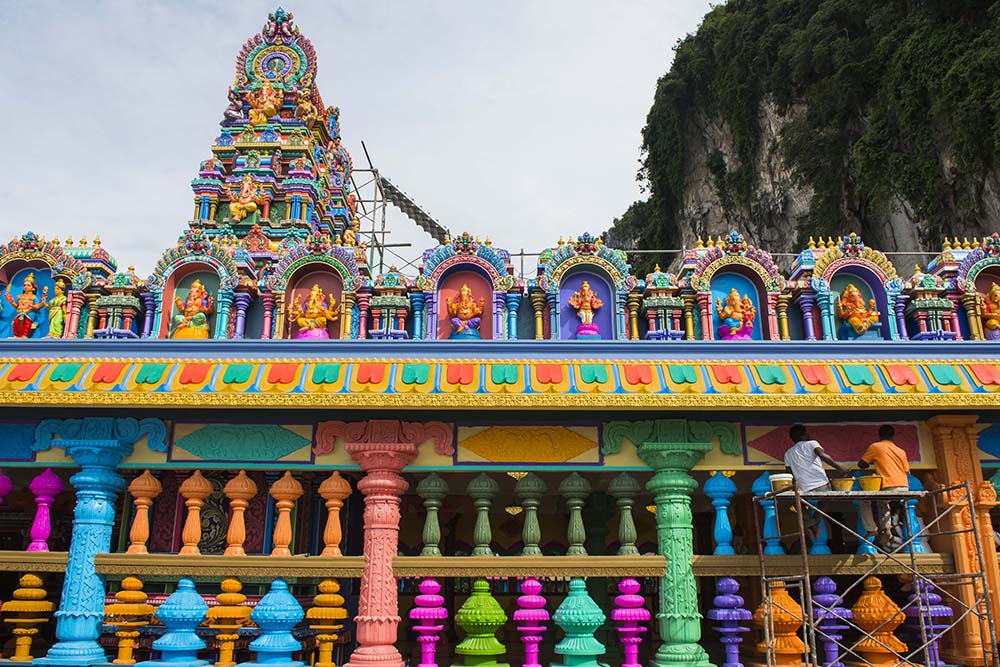
A typical feature of a Hindu temple is the multi-coloured murti, which consists of representation of various Hindu deities in various forms including stone statues.
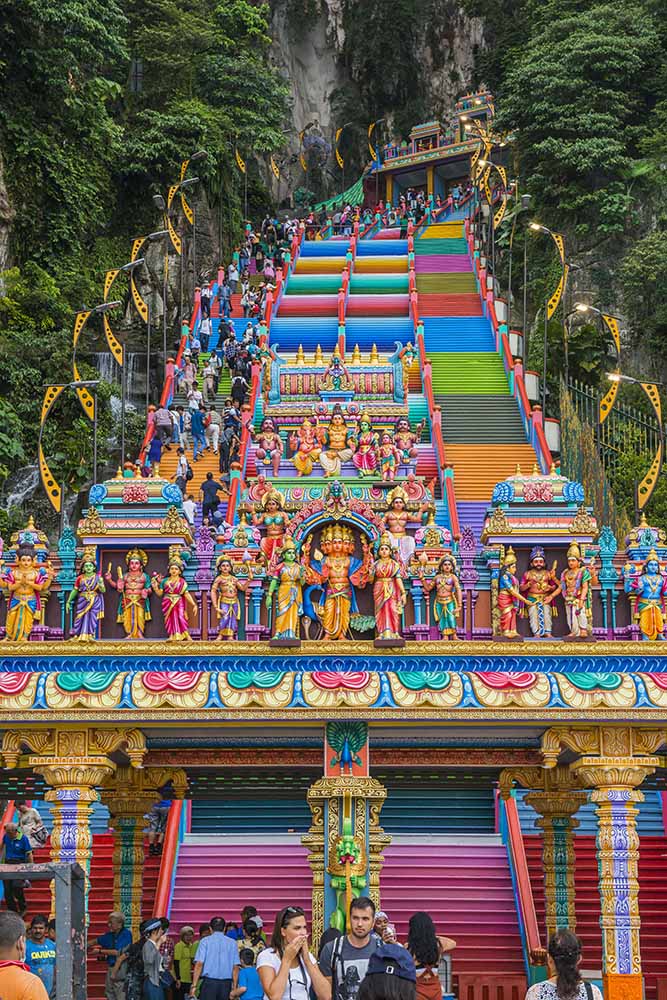
Originally a wooden staircase back in late 19th century, a 272-step concrete staircase was built in 1920 for worshippers and visitors to access the main Batu Caves Temple.
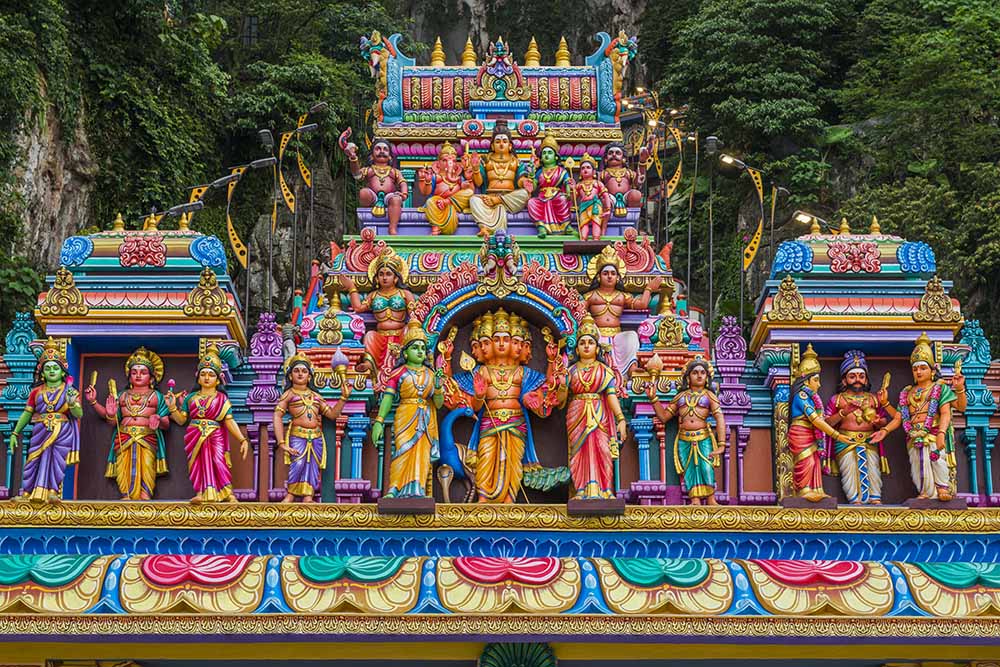
Various Hindu deities guarding the entrance in front of the huge staircase.

The middle part of the Batu Caves staircase has been painted in ombre shades of red, yellow, blue and green, while the side stairs are painted in various other colours including orange and grey.
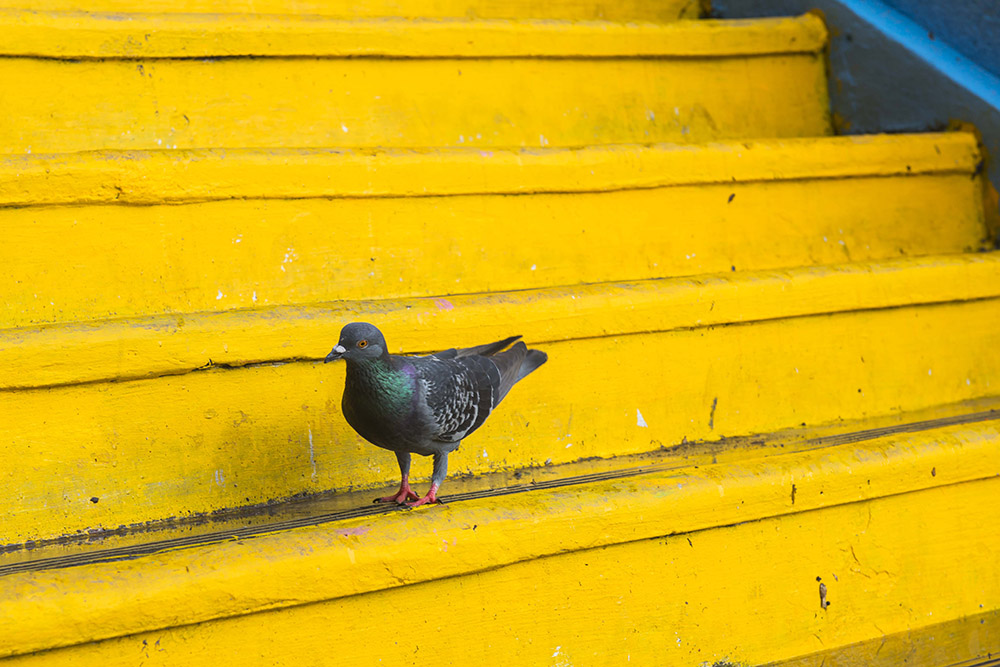
One of the thousands of pigeons that calls this place home.
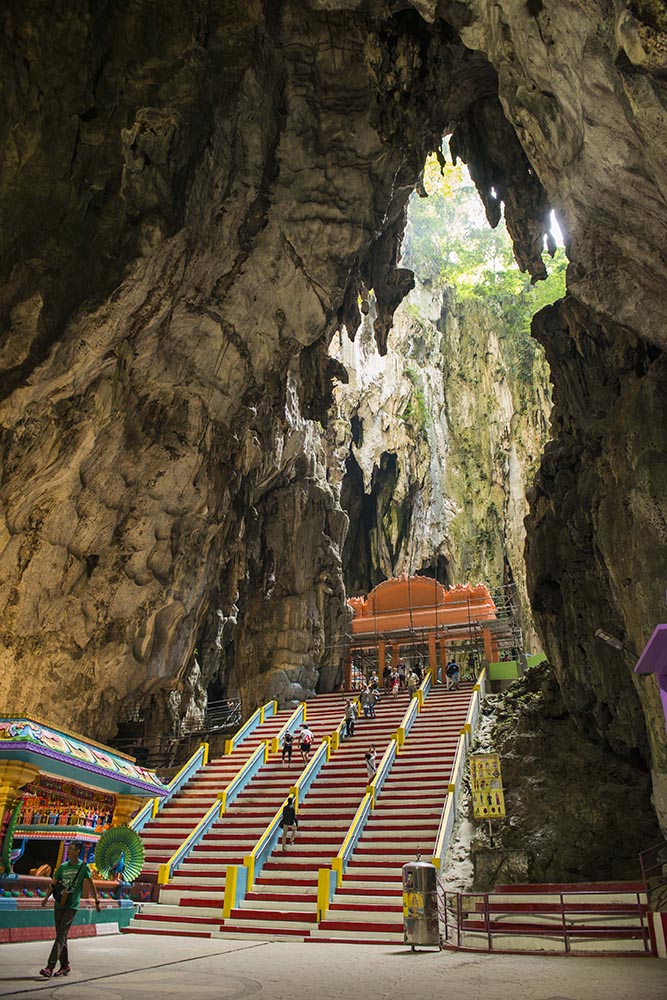
After the 272-step climb, visitors will reach inside Batu Caves’ main temple, known as Temple Cave or Cathedral Cave. The first shrine in the cave was built in 1891.
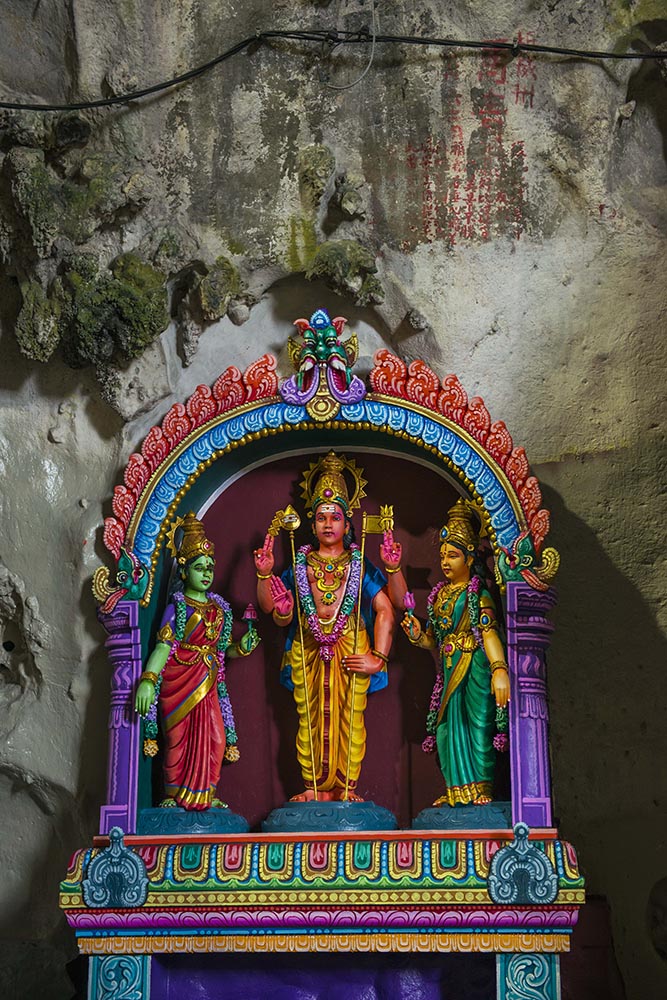
Batu Caves Temple’s recent makeover is done for its kumbhabhishekam, a Hindu temple cleansing and revamp ritual that is carried every 12 years in order to synergise and revive the energy of the place and its presiding deities.
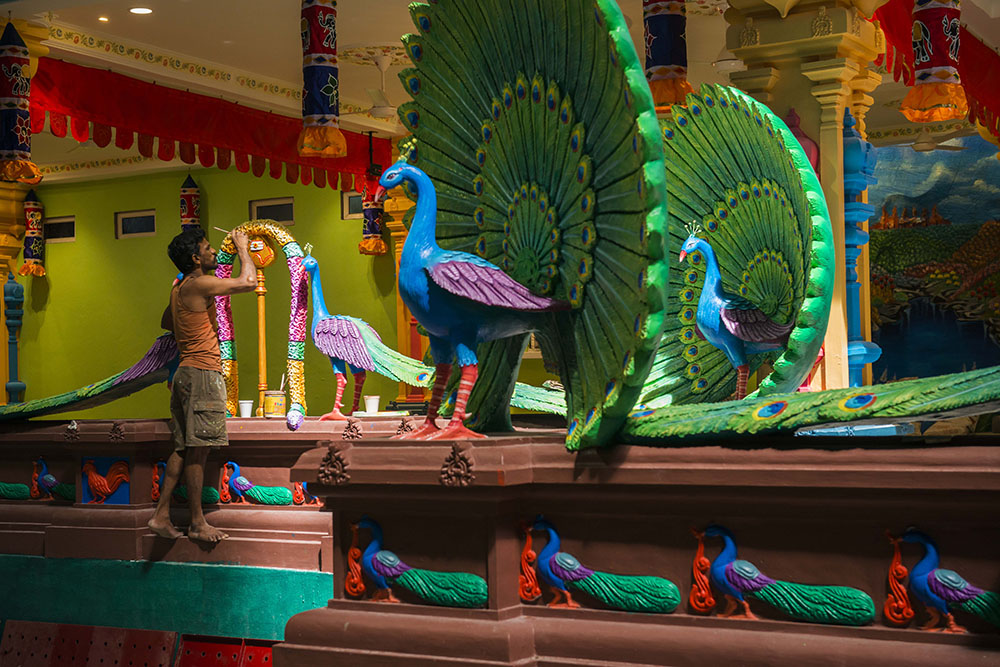
Painting and renovating works are still ongoing before the official unveiling on 31 August 2018.
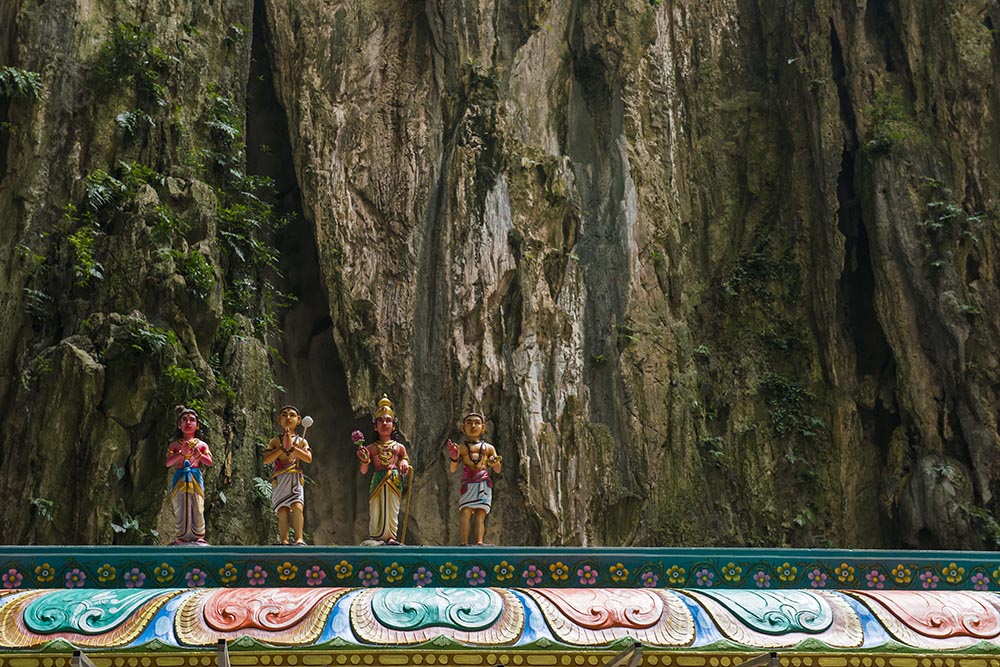
Statues of various Hindu deities standing majestically amidst the backdrop of the 400-million-year-old limestone grotto.

Batu Caves is home to a wealth of flora and fauna, including these adorable mother-and-child macaques.

One of the most revered Hindu temples outside of India, Batu Caves Temple draws in millions of people every year. It is especially busy during the Hindu festival of Thaipusam, when approximately two million pilgrims and visitors gather here to revel in the celebrations.

An old look of Batu Caves before the vibrant facelift, with the staircase originally painted in white and red.
EXPERIENCE KUALA LUMPUR: AirAsia offers the lowest fares to over 130 destinations. Book your seats, accommodation, holiday packages and activities now at airasia.com.








